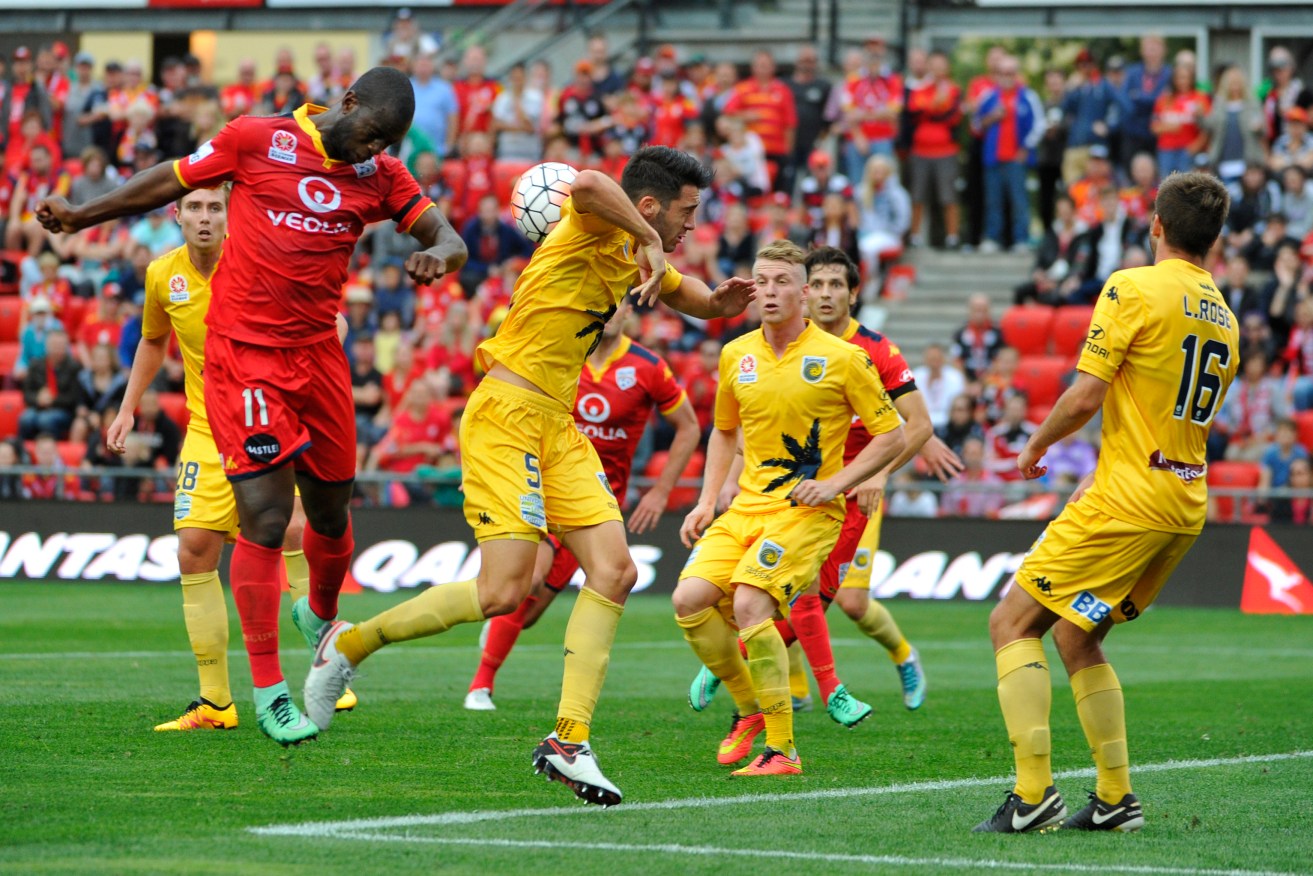Manton St Tales: Why the A-League must expand
The coming league will mark four decades of a national soccer competition in Australia – in various guises. But Paul Marcuccitti argues this is no time for the sport to rest on its laurels – the A-League needs to aggressively expand… even if it means some teams fold.

Matches against Central Coast rarely draw big crowds. Photo: David Mariuz / AAP
The 2016-17 A-League will be the 40th season of national soccer in Australia but no-one is likely to order a celebratory cake.
There are supporters who have little care for the 28 seasons of the defunct National Soccer League. And some from the NSL era don’t like its replacement.
But the milestone should be commemorated. We were the first football code to set up a proper national competition. And, despite a lot of ups and downs, we’re still here. Somehow.
On top of that, 2016-17 will continue a record breaking run of club stability; the fifth consecutive season since a team entered or left the league.
There are several reasons why this has never happened before. Until the early 1990s, the NSL had promotion and relegation in most of its seasons. The move to a summer competition (while state leagues continued to play in winter) made this difficult to continue but then clubs would still fold. Or get kicked out.
Some of the teams that entered the league in the ‘90s were new; not existing clubs in state leagues. A few were good ideas – Perth Glory, Brisbane Strikers and, though some might disagree, Football Kingz (from New Zealand).
As always there were bad ideas too. Remember Carlton and Collingwood? I still can’t believe anyone imagined successful NSL enterprises would grow from links with AFL clubs. Especially those two.
The A-League has also seen clubs come and go. New Zealand Knights – Football Kingz’ successor – lasted just two seasons and was replaced by Wellington Phoenix. North Queensland Fury and Gold Coast United were brought in before the 2009-10 season; both were gone by 2012. And during that period Melbourne Heart (now Melbourne City) also joined the party.
So, after 35 years of almost constant change in membership of our national soccer competitions, is this steady five-season run something to celebrate?
Perhaps. But we’ve reached a point where it shouldn’t continue.
I don’t suggest that any of the current clubs should leave (or be forced to leave). But it’s time to bring more in.
More teams will create more interest, represent more fans and provide more opportunities for players to join Australia’s top competition.
Football Federation Australia is, perhaps unsurprisingly, quite conservative in the way it runs the game. And that has resulted in, what appears to be, a growing reluctance to increase the size of the 10-team A-League.
Some commentators support this and point out how problematic a couple of the existing clubs are.
But that’s always likely to be the case. If we wait to have 10 clubs all sailing smoothly, we’ll never add any. Moreover, we need to accept that new ventures might fail.
Can you imagine if the AFL waited until it had no struggling clubs to keep afloat before it expanded? It’d probably still have 14 teams as it did when it replaced its V with an A.
Yes, it’s a wealthier competition but its clubs are more expensive operations as well.
And with a bit of imagination, FFA could make costs for its new clubs lower.
Player wages are a big cost – the A-League’s salary cap is $2.6 million. But the salary floor is the real problem. It’s 87.5 per cent, so a team must pay a minimum of $2.275 million to its squad.
Why?
If a club thinks it can compete by paying a lower amount, give it the chance to do so. The world is full of examples of teams punching above their financial weight. You even see it happen in our state leagues.

Football Federation Australia removed North Queensland Fury from the A-League after just two seasons. Photo: Dave Hunt / AAP
This might not be achieved easily because of the daft arrangement that FFA maintains with the Professional Footballers Association which brings the salary cap into their collective bargaining agreement. But if FFA offered the PFA the chance to grow its membership through new A-League clubs, you’d hope the players’ union might be mature enough to accept a proposal that allows the new teams to have lower starting costs through a reduced salary floor.
Even with the high cost of entry, there are parties interested in joining the league. Some are existing clubs in state competitions, some are new ideas and recently Football West announced that it was aiming to bring a second A-League licence to WA. There are few details but enough to suggest the proposal is more than a thought bubble.
Excellent. Allow anyone that wants an A-League licence to apply, bring in a process of evaluation similar to the one used to establish the A-League more than a decade ago, and get the submissions assessed independently. (So if that suggestion of a new franchise in southern Sydney really is a good bet, we’ll finally find some people outside FFA that think so.)
Whatever shortcomings the NSL had, the number of teams in the competition was rarely one of them. It usually had around 14 clubs which meant that it only needed two round robins. To fill out the season, A-League teams play all their opponents three times.
And frankly that can get boring. Sure, we love the derbies and other big rivalries but you also have to put up with your team playing Central Coast three times. One less match against Wellington would be an improvement too – I’ve plenty of respect for the New Zealanders but, whether they’re home or away, the areas for visiting supporters are (understandably) underpopulated.
For every problem there is a solution. Need to negotiate a TV deal? Fine. Bring in options that allow for more matches on weekends if new clubs aren’t ready to start when the deal does (but are ready before it expires).
The longer we wait, the harder the next step will seem.
Paul Marcuccitti is a co-presenter of 5RTI’s Soccer on 531 program which can be heard from 10am on Saturdays.




